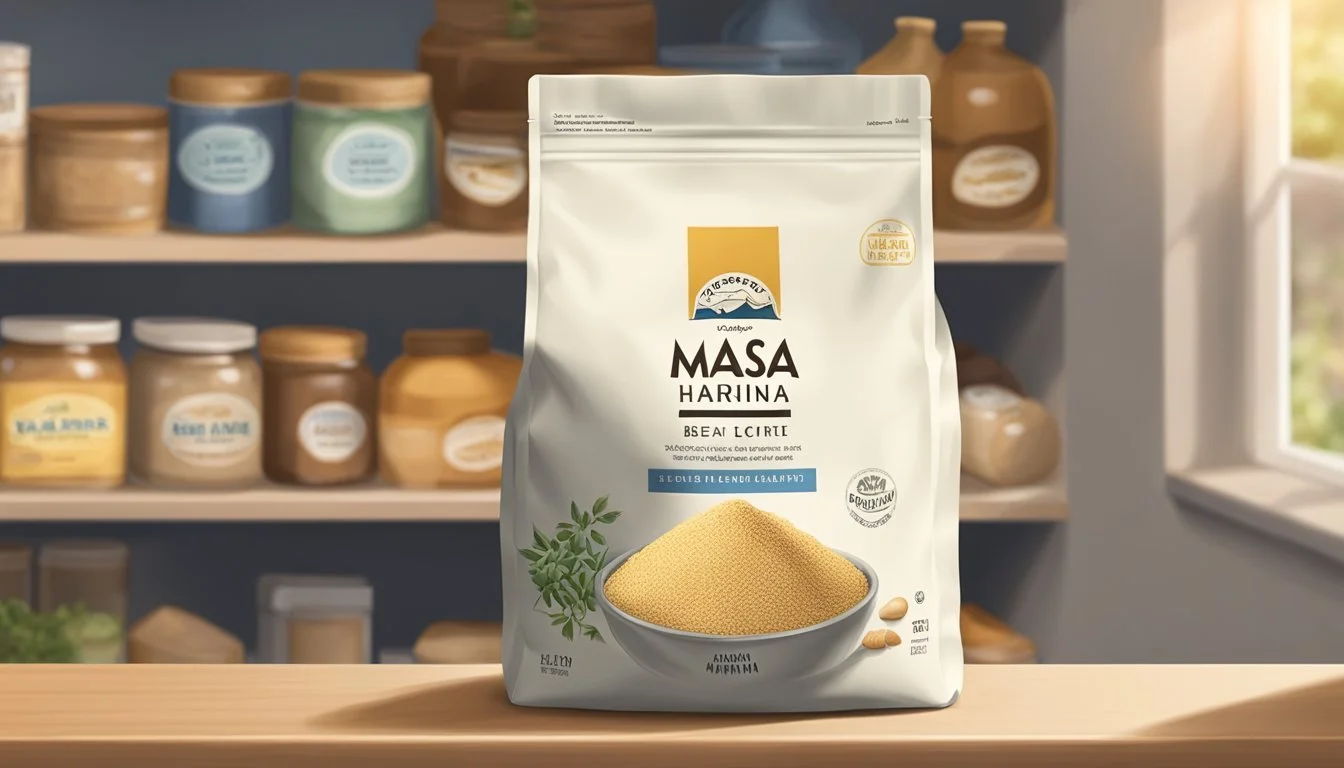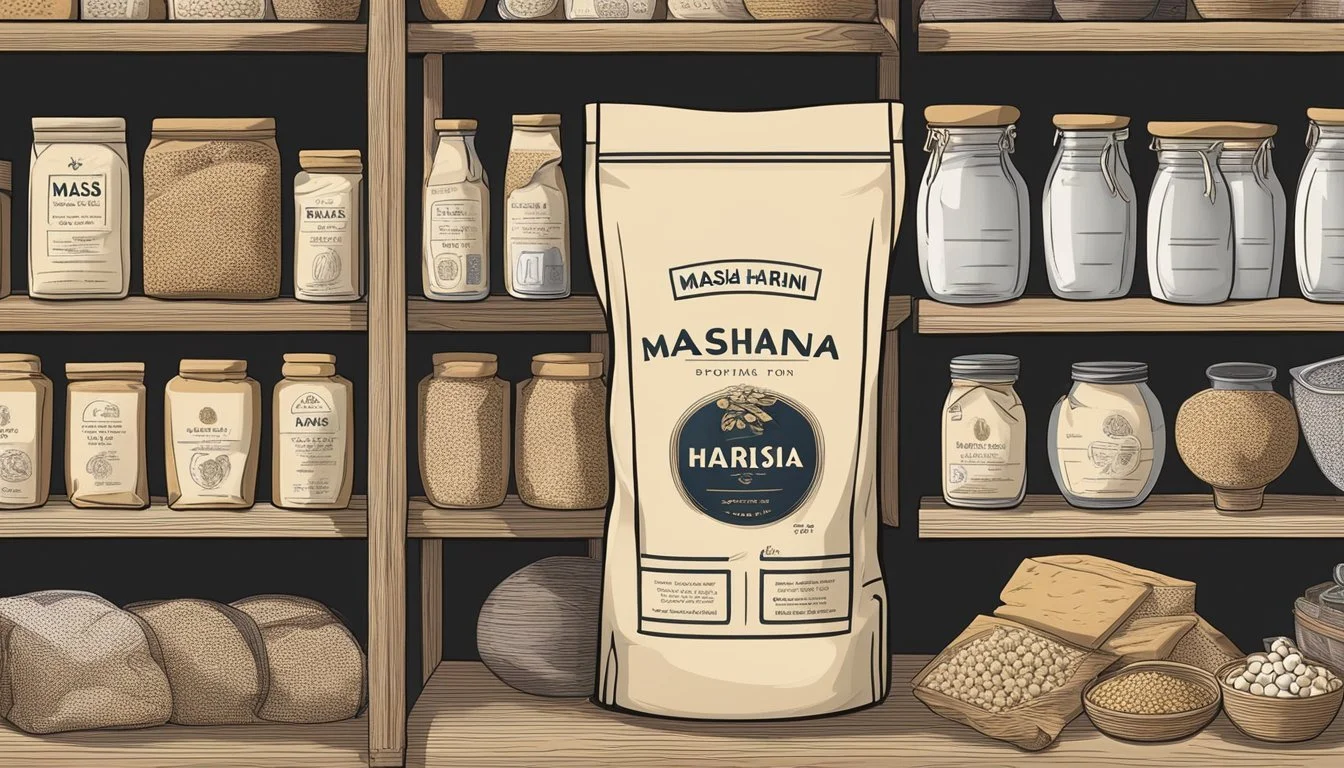How Long Does Masa Harina Last?
Shelf Life and Storage Tips
Masa harina (how long does masa harina last?), a staple in Latin American cuisine, is a finely ground flour made from corn (how long does corn last?) treated with limewater, known as nixtamalization. The process imbues the flour with a distinctive flavor and increases its nutritional value, making masa harina a crucial ingredient for dishes such as tortillas, tamales, and arepas. The shelf life of masa harina is a point of interest for both home cooks and professionals, as it dictates how long this ingredient retains its quality and taste for culinary uses.
Under optimal storage conditions, masa harina typically maintains its freshness for 9 to 12 months. To ensure that it stays at peak quality for as long as possible, it should be stored in a cool, dry place, such as a pantry. For extended preservation, an airtight container or a vacuum-sealed bag can prevent moisture and pests from compromising the flour's integrity. Proper storage not only prolongs the shelf life but also helps in maintaining the authentic flavor that defines the dishes made with masa harina.
Understanding Masa Harina
Masa Harina is a staple ingredient in traditional Mexican and Latin American cuisines, pivotal for creating dishes like tortillas, tamales, and sopes. This section delves into its origins, production process, and the various types available on the market.
Origins and Traditional Use
Masa Harina, which translates to "dough flour," has deep roots in Mexican cuisine. It is central to preparing a multitude of traditional dishes such as tortillas, a cornerstone of Mexican cuisine, and extends to Latin American dishes like pupusas, gorditas, and arepas. The cultural importance of Masa Harina stems from its origins in the ancient Mesoamerican process of nixtamalization, which enhances corn's nutritional value.
Production Process
The production of Masa Harina begins with nixtamalization, where corn kernels are soaked and cooked in an alkaline solution, usually lime (calcium hydroxide), and then washed to remove the hulls. This process transforms the corn into nixtamalized corn or hominy, which is then ground to produce fresh masa dough. When dried and powdered, it becomes Masa Harina, allowing for extended shelf life and convenience.
Types and Variants
Masa Harina is not a one-size-fits-all ingredient; it comes in different variants to suit a variety of dishes:
White Masa Harina: Made from white corn, it's commonly used for tortillas and tamales.
Yellow Masa Harina: Derived from yellow corn, this type has a slightly different flavor and is often used in making cornbread and other recipes.
Blue Masa Harina: With a nuttier flavor, it is made from blue corn and is used in certain artisanal tortillas and Mexican dishes.
Each type of Masa Harina has a specific texture and flavor profile that lends itself to dishes ranging from sopes to enchiladas to nachos. Additionally, brands like Maseca are popular for their quality Masa Harina, ideal for creating authentic Mexican cuisine at home.
Masa Harina is not interchangeable with wheat flour and is uniquely suited for specific recipes where the flavor and texture of corn masa are desired. Fresh masa dough can also be made by mixing Masa Harina with warm water, embodying the traditional feel of homemade Latin American dishes.
Storage Solutions
Ensuring the longevity of masa harina hinges on optimal storage solutions. These methods protect against spoilage and maintain the flour's quality.
Proper Storage Methods
For masa harina (flour), the ideal storage space is a cool, dry place such as a pantry. Airtight containers or heavy-duty, sealable plastic bags protect the flour from moisture and pests. Below is a recommended setup for masa harina storage:
Container: Use Tupperware containers or vacuum-sealed bags.
Location: Store in a cool dark place like a pantry, away from direct sunlight or heat sources.
Moisture control: If possible, include a desiccant pack to absorb excess moisture.
Maximizing Shelf Life
To further extend the shelf life of both masa harina (flour) and masa (dough), one can use the refrigerator or freezer for storage. Here is a quick reference for maximizing masa's shelf life:
Masa Harina (Flour):
Refrigerator: Store in an airtight container; not typically necessary unless ambient temperature is high.
Freezer: Store in a freezer-safe, airtight container or bag for up to one year to keep flour fresh.
Masa (Dough):
Refrigerate: Place dough in an airtight container or wrap tightly with plastic wrap and use within 3-4 days.
Freeze: For longer storage, wrap the dough with saran wrap and then place in a freezer-safe bag to freeze. Properly frozen masa dough can last for 3-6 months.
By maintaining proper storage conditions and controlling moisture content, one can significantly impact the shelf life of masa harina and masa dough, keeping them ready for future culinary uses.
Shelf Life Determinants
The shelf life of masa harina is subject to various factors that can either preserve its freshness or accelerate its deterioration. Understanding these determinants is crucial to maintaining the quality and edibility of masa harina.
Factors Influencing Freshness
Heat and Moisture: The longevity of masa harina is largely affected by the storage temperature and moisture levels. For optimal preservation, store it in a cool, dry place to prevent the onset of mold and bacteria growth.
Airtight Container: Using an airtight container shields masa harina from air and moisture, which are catalysts for spoilage.
Quality of Ingredients: A higher quality of ingredients used in masa harina can contribute to a longer shelf life, due to less likelihood of containing impurities that could lead to spoilage.
Preservatives: Some masa harina includes preservatives that extend its shelf life by retarding the growth of bacteria and mold.
Usage of a Damp Cloth: Covering masa harina with a damp cloth should be avoided, as the added moisture can hasten spoilage.
Signs of Spoilage
Examining masa harina for spoilage involves assessing its:
Texture: Masa harina should remain powdery; if it clumps or feels damp, it may be compromised.
Flavor and Aroma: Any deviation from its typical corn-based flavor or its neutral aroma could indicate spoilage. A sour or off smell is a clear sign of fermentation.
Discoloration: Look out for any unusual changes in color, as this can indicate mold or other forms of bacterial growth.
Taste: Should the masa harina pass the visual and scent tests, a small taste test can help detect a stale or off flavor, indicating that it's time to discard the product.
Safety and Quality Tips
When dealing with masa harina, it's important to focus on proper storage and contamination prevention to maintain the food safety, freshness, and quality of the product. These measures ensure that the flavor, aroma, and nutritional value are preserved, while reducing health risks associated with pests and spoilage.
Preventing Contamination
Masa harina should be stored in an airtight container or a sealed bag to prevent exposure to contaminants and pests. Storage containers must be kept in a cool, dry place to discourage the growth of mold and bacteria. Regularly check for the presence of insects or worms, as they can both indicate and cause contamination.
Inspect packaging: Before purchase, ensure the masa harina bag is intact, with no rips or holes.
Transfer to containers: Upon opening, transfer the masa harina to a container with a tight-fitting lid.
Quality Maintenance
To maintain the masa harina's quality in terms of texture and taste, it's crucial to follow these storage guidelines:
Temperature control: Store masa harina in a cool environment; a pantry or cupboard away from heat sources is ideal.
Freezing: For long-term storage, masa harina can be frozen, which extends its shelf life by 1-2 months.
Moisture avoidance: Keep the container away from moisture to prevent the masa from becoming lumpy or developing off-flavors.
By adhering to these protocols, one ensures the masa harina remains a quality ingredient ready for culinary use.
Utilization Techniques
Utilizing masa harina effectively requires familiarity with its preparation and diverse recipes to ensure optimal freshness and taste. Mastery of these techniques is essential for achieving the best results in traditional Mexican cuisine.
Cooking and Preparation
When preparing corn masa for dishes such as tortillas or tamales, one should ensure it is kneaded adequately to achieve the right consistency. This can take time and physical effort, but well-kneaded masa results in a better texture for the finished dish.
Kneading: Knead the corn masa thoroughly until it's pliable, which may take several minutes.
Baking: For baking, ensure the masa harina is completely hydrated, as a dry mix may lead to crumbly tortillas.
Microwave: Saran wrap can be used to cover tortillas while microwaving to keep them moist and prevent drying out.
Comal: This traditional griddle is ideal for cooking tortillas. The tortillas should be turned frequently to avoid burning and ensure even cooking.
Recipe Ideas and Variations
Masa harina flexes its versatility across a range of Mexican dishes and can be customized with various ingredients.
Traditional Mexican:
Corn Tortillas: Combine masa harina with water and a pinch of salt, then press into tortillas before cooking on a hot comal.
Tamales: Mix fresh masa with lard, baking powder, and broth for a richer flavor. Wrap in corn husks and steam until firm.
Dessert Tamales: Infuse sweetened masa with cinnamon, chocolate, or fruit for an indulgent twist on traditional tamales.
Nachos: For homemade nachos, cut freshly made tortillas into triangles, add a light coat of oil and salt, and bake until crisp.
To adapt recipes or create variations, one might add additional ingredients such as cooked, seasoned meats, cheese, or vegetables into the masa for a different taste. This flexibility is key to the enduring popularity of masa harina in Mexican cuisine.
Purchasing and Packaging
When selecting masa harina, the focus should be on quality and packaging to ensure maximum freshness and a longer shelf life.
Selecting High-Quality Masa Harina
Quality is paramount when purchasing masa harina. Consumers should seek brands that mill their product from whole grains and refrain from adding preservatives or additives, which could affect both nutritional value and freshness. Chefs like Rick Bayless often advocate for high-quality masa to not only ensure superior taste but also to leverage its longer usable life once packaged correctly.
Understanding Labels and Expiration Dates
Inspecting labels and expiration dates is crucial. Masa harina usually comes with an expiration date printed on the packaging, which can range from 9-12 months. After purchase, it should be stored in an air-tight container to prevent exposure to moisture and pests, which can expedite spoilage. Such packaging not only maintains the freshness but also extends the shelf life of the product. Grocery stores typically stock masa harina in sealed bags, but transferring it to a tight container at home offers extra protection and can extend its usability.








